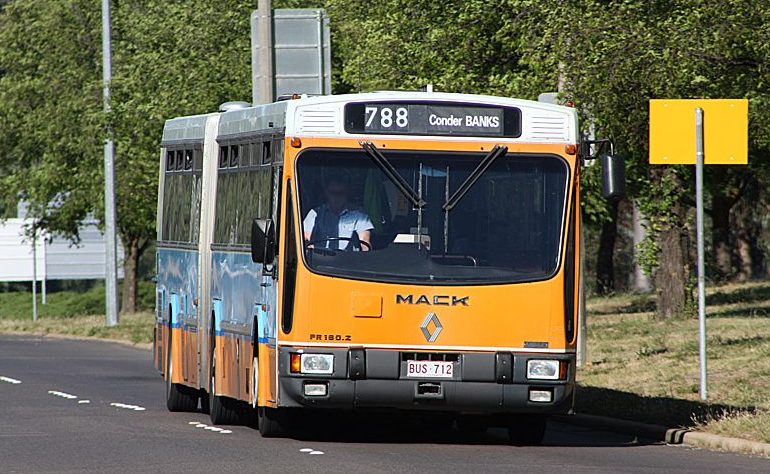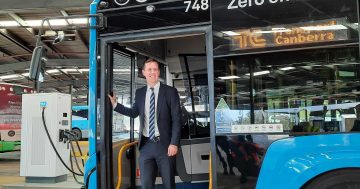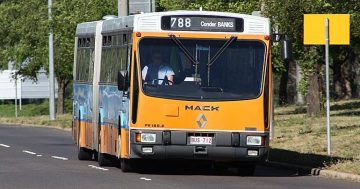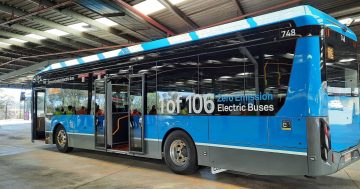
On the way out: the leased electric buses will replace the older, high-polluting Renault buses. Photo: ACT Bus.
Canberra’s first electric buses may be on the road by the end of the year as part of an interim leasing arrangement before the ACT Government acquires a permanent zero-emissions fleet.
The Government has released a tender for up to 34 electric buses to replace the ACT’s ‘dirty’ diesel Renault buses, the highest greenhouse gas emitters in the Transport Canberra fleet.
It says an initial eight zero-emission buses will be added to the fleet as a minimum, with the opportunity for industry to offer more depending on market capacity.
The procurement will be assessed based on providers’ ability to deliver buses with enhanced accessibility, lower emissions operations and associated charging infrastructure.
Minister for Transport and City Services Chris Steel said that by leasing the buses the Government can keep the network running without purchasing more diesel buses that would remain in the fleet for a further 20 years.
Last December the Government sounded the market for private sector providers for 90 battery-electric buses, as well as associated operating requirements such as charging infrastructure, maintenance and energy supply.
READ ALSO: NEWS Cash fares history as government seeks MyWay replacement
The Government had wanted formal procurement to start by mid-2021, but said that it will take place in the third quarter of 2021 with the first of these vehicles to arrive in 2021-22 and the final by 2024.
It says there has been a high level of interest with more than 100 industry representatives participating so far.
Mr Steel said the leasing arrangement would be an important step forward in the transition towards zero-emissions public transport in the ACT.
“We recognise that the ACT Government has to take action to cut our own transport emissions alongside working to help Canberrans cut those from the private vehicle fleet,” he said.
“This is a transition we want to make as rapidly as possible in light of evolving technology and a growing number of suppliers in the market.”
The government is looking for innovative solutions which incorporate both buses and charging infrastructure, and industry was being encouraged to form consortiums to cover all needs.
The procurement is also being released as three packages to aid this approach.
“Industry may wish to bid for one, two or all three of the packages depending on their interest and organisational capabilities,” Mr Steel said.
The older Renault buses also aren’t up to current accessibility standards and replacing them will mean Canberrans using a wheelchair or travelling with prams will be able to use every ACT Government bus and light rail service.
The new buses are expected to join the Transport Canberra fleet in late 2021 subject to the procurement process.

















